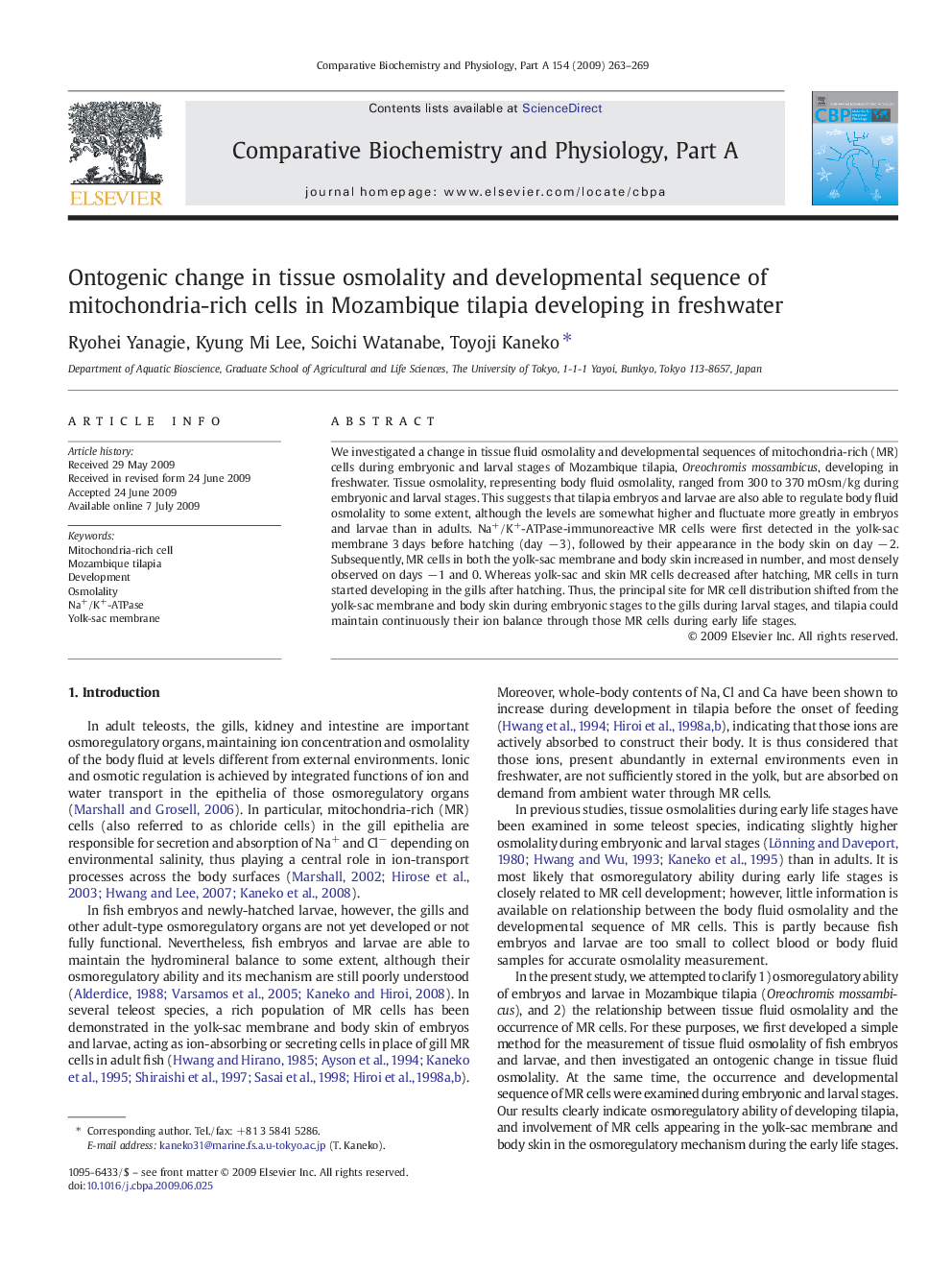| Article ID | Journal | Published Year | Pages | File Type |
|---|---|---|---|---|
| 1974500 | Comparative Biochemistry and Physiology Part A: Molecular & Integrative Physiology | 2009 | 7 Pages |
We investigated a change in tissue fluid osmolality and developmental sequences of mitochondria-rich (MR) cells during embryonic and larval stages of Mozambique tilapia, Oreochromis mossambicus, developing in freshwater. Tissue osmolality, representing body fluid osmolality, ranged from 300 to 370 mOsm/kg during embryonic and larval stages. This suggests that tilapia embryos and larvae are also able to regulate body fluid osmolality to some extent, although the levels are somewhat higher and fluctuate more greatly in embryos and larvae than in adults. Na+/K+-ATPase-immunoreactive MR cells were first detected in the yolk-sac membrane 3 days before hatching (day − 3), followed by their appearance in the body skin on day − 2. Subsequently, MR cells in both the yolk-sac membrane and body skin increased in number, and most densely observed on days − 1 and 0. Whereas yolk-sac and skin MR cells decreased after hatching, MR cells in turn started developing in the gills after hatching. Thus, the principal site for MR cell distribution shifted from the yolk-sac membrane and body skin during embryonic stages to the gills during larval stages, and tilapia could maintain continuously their ion balance through those MR cells during early life stages.
